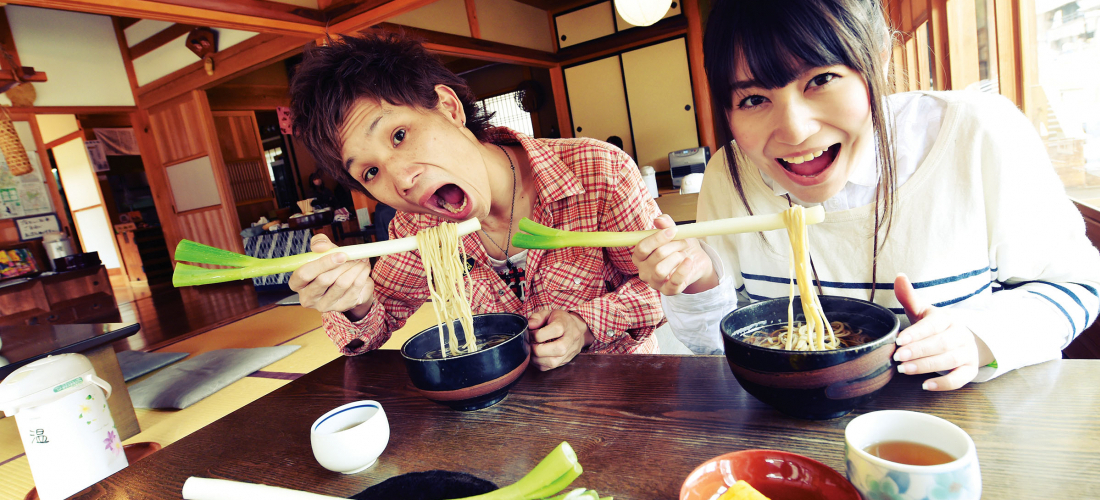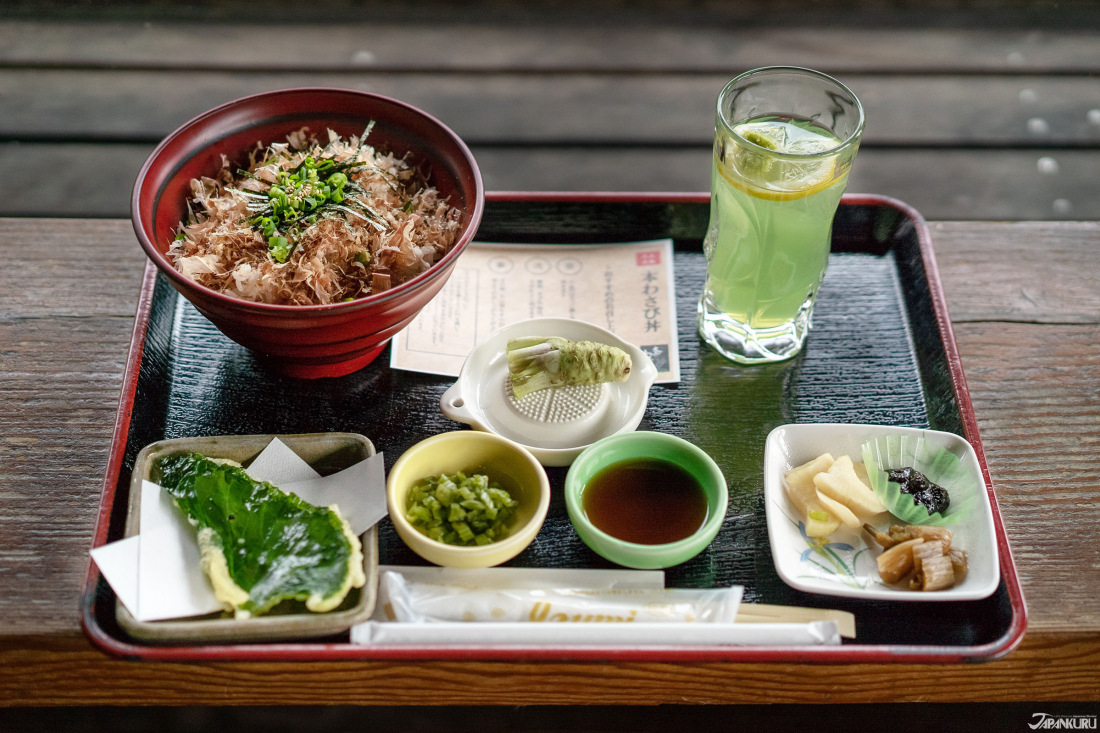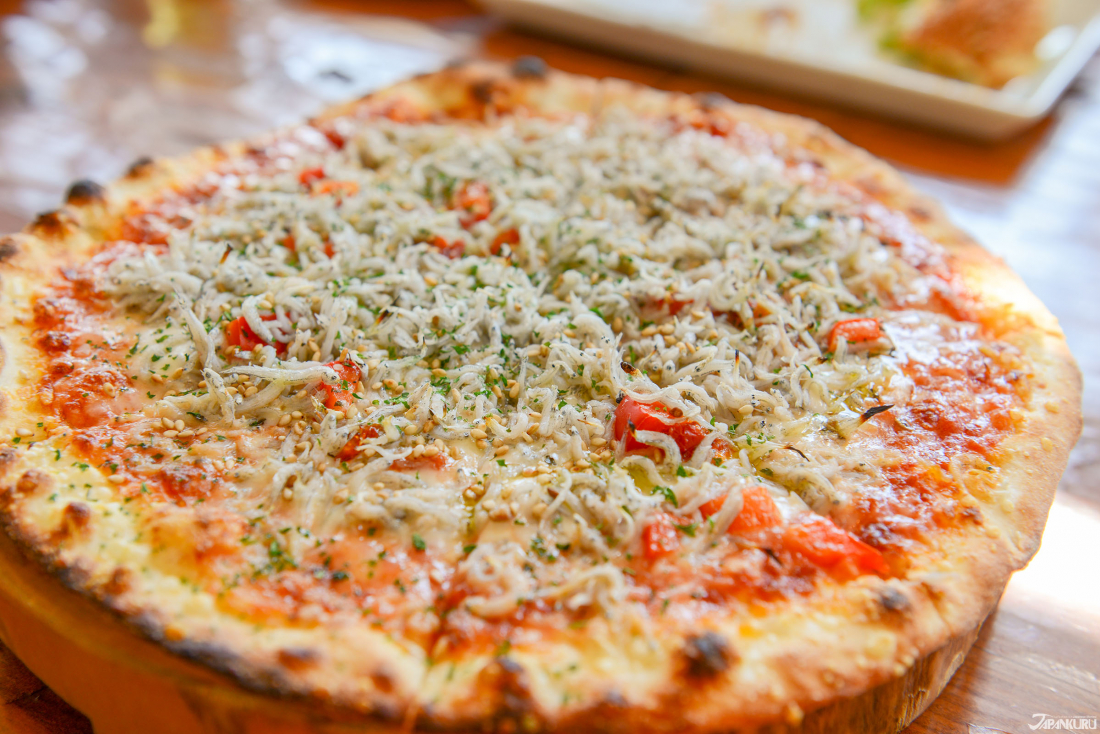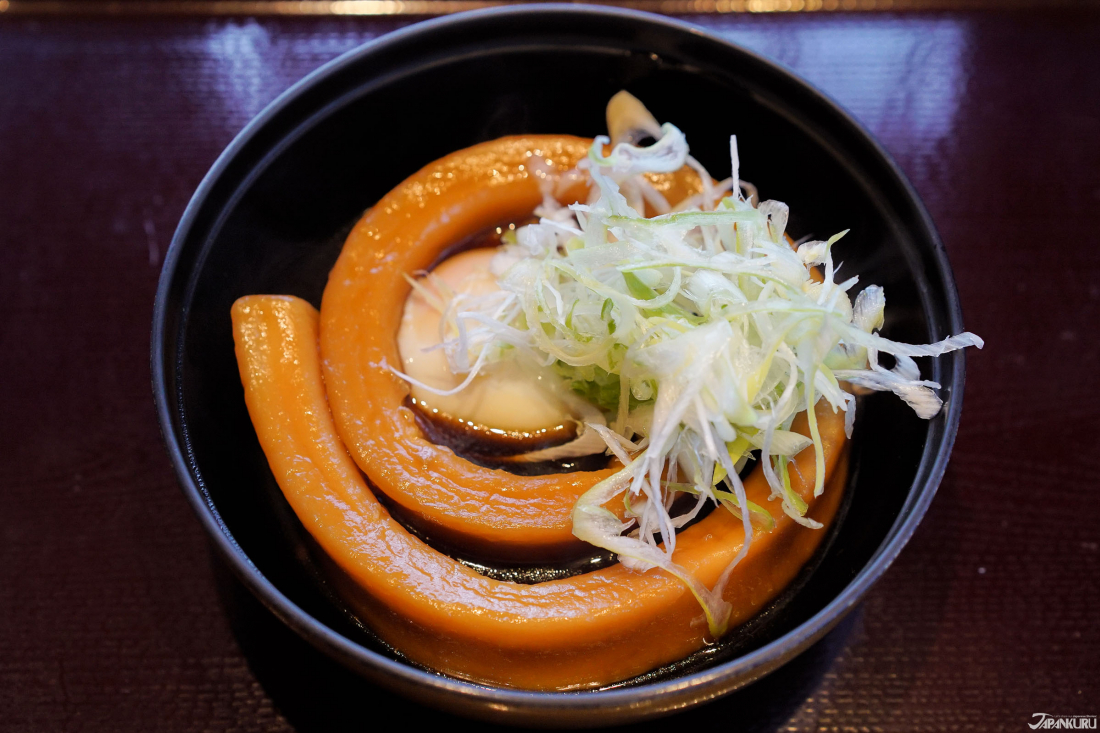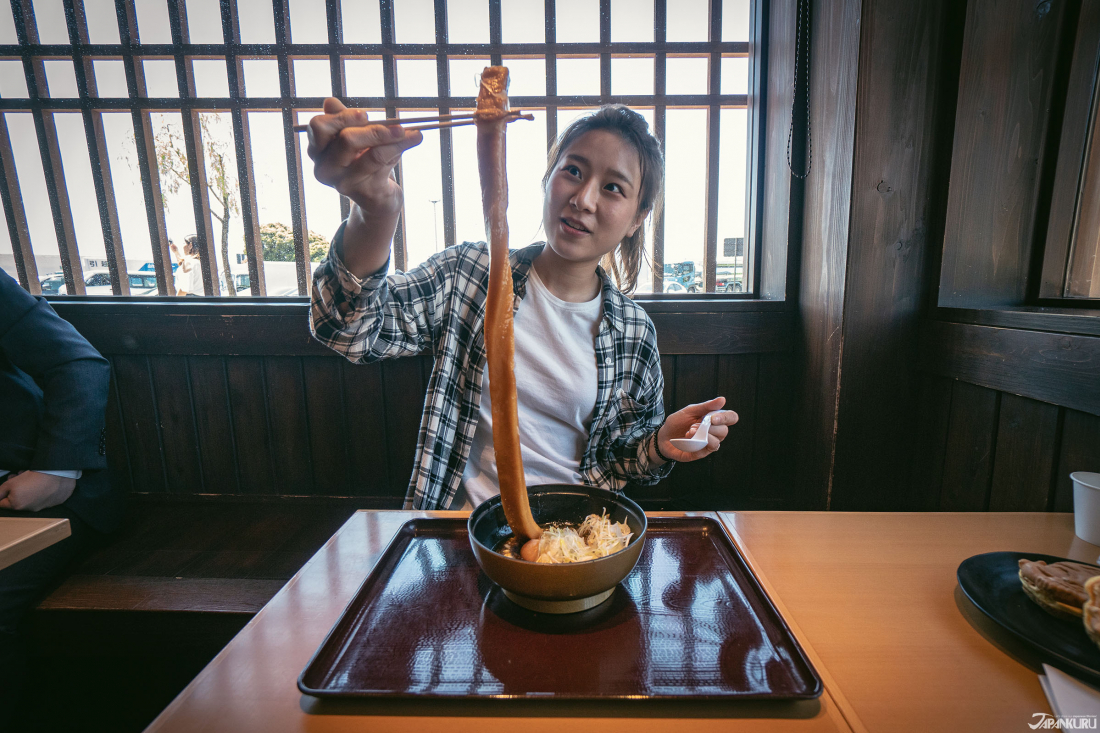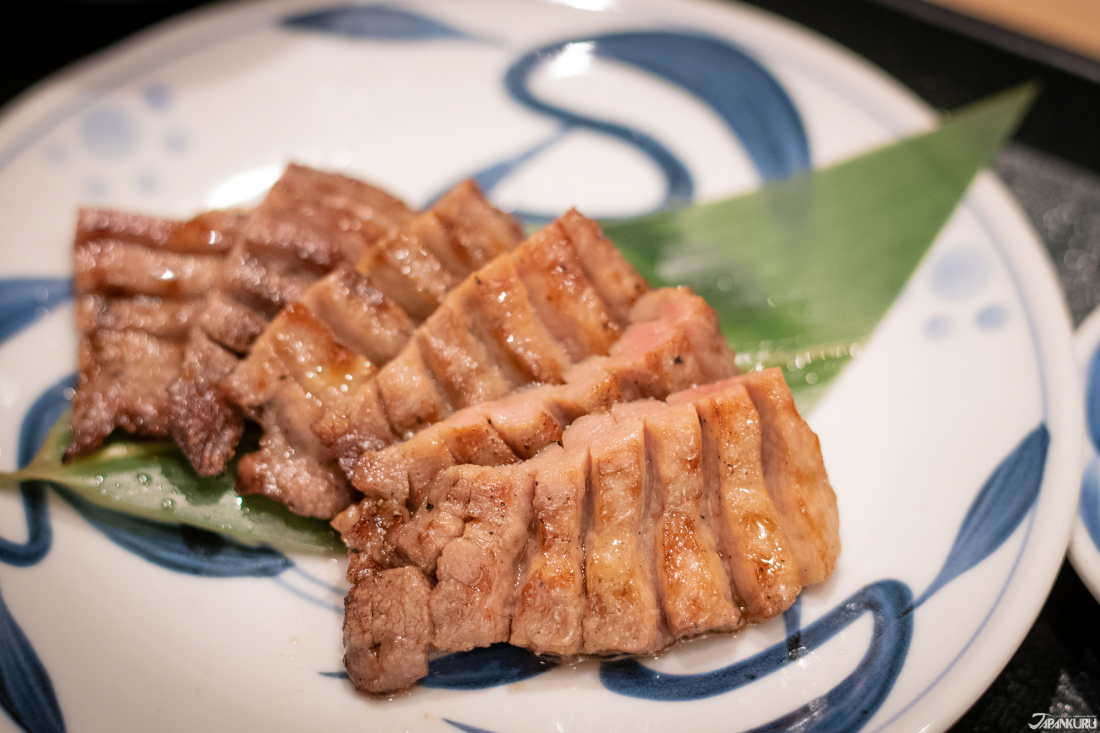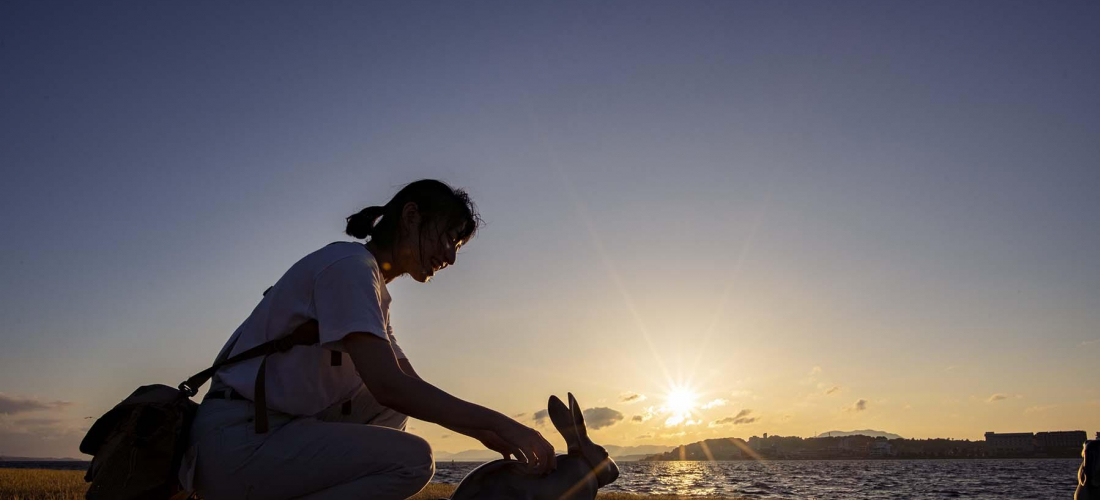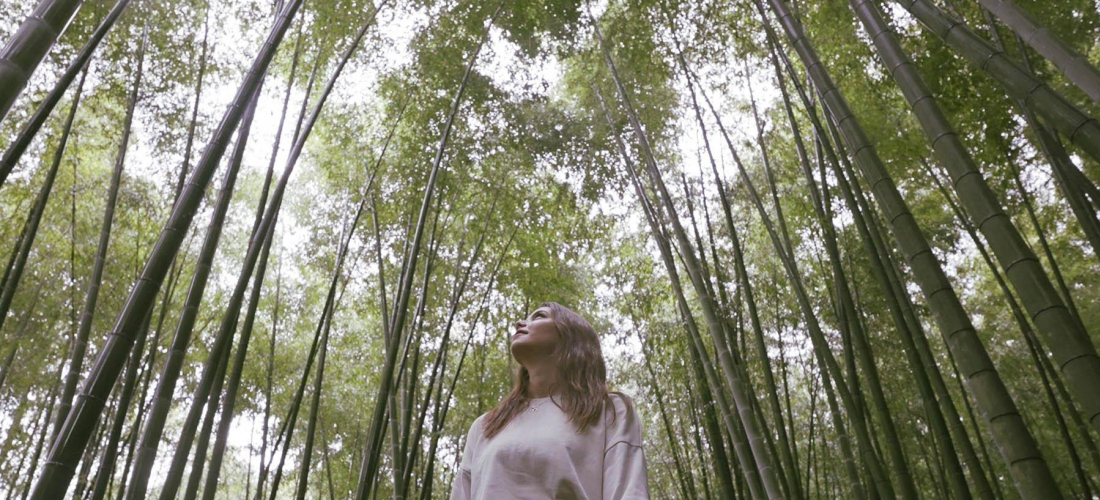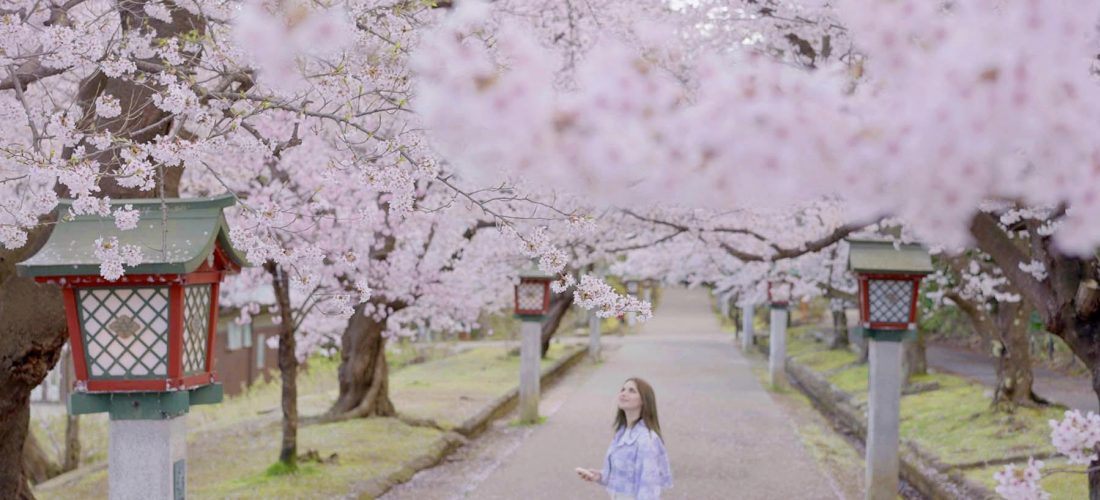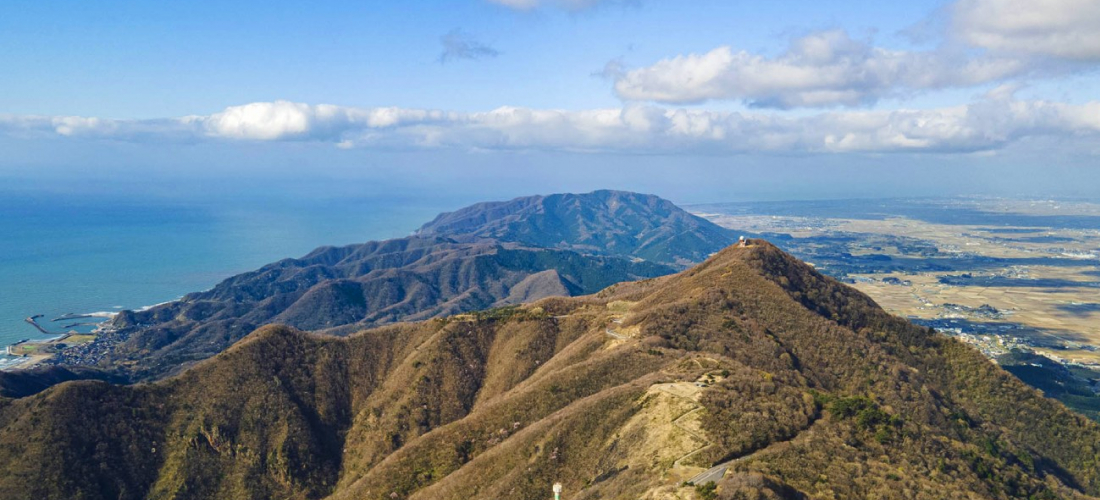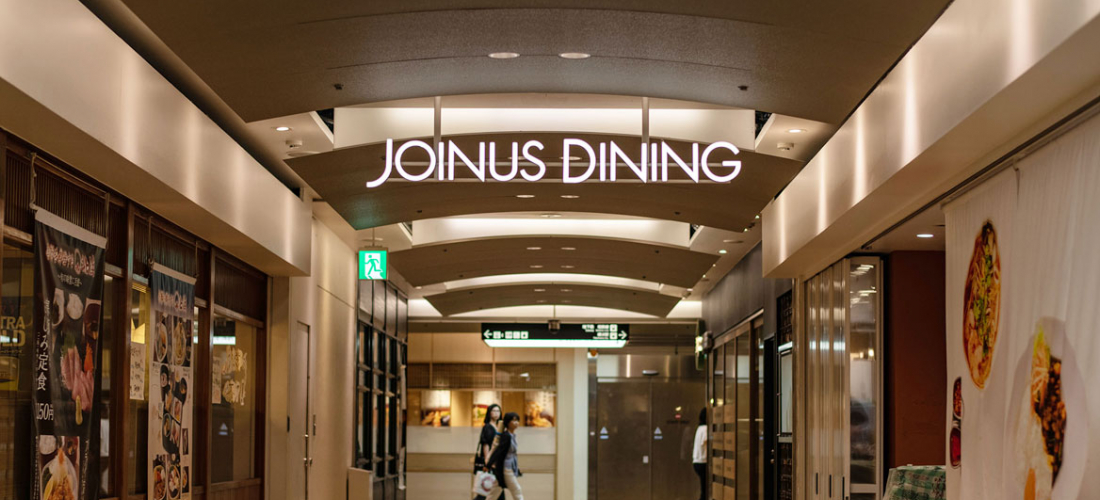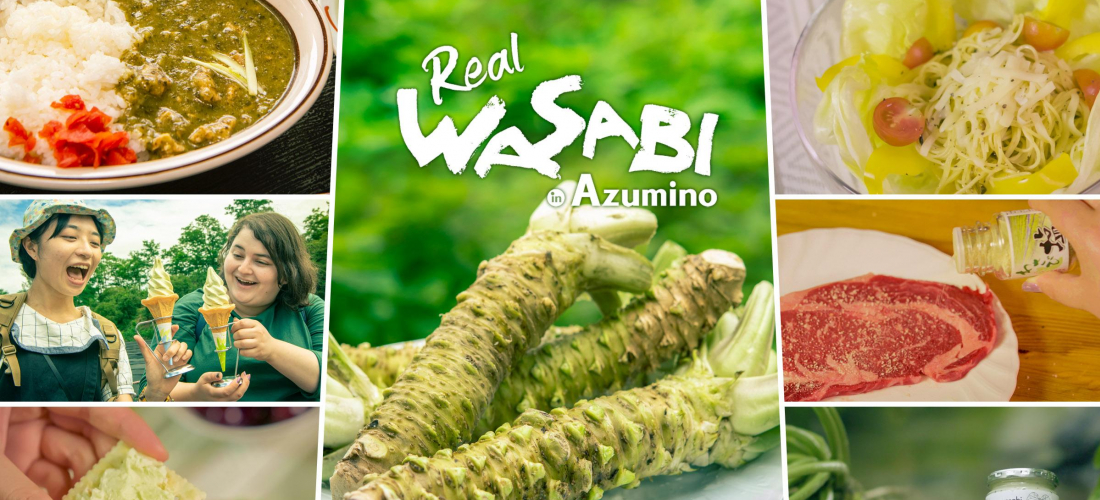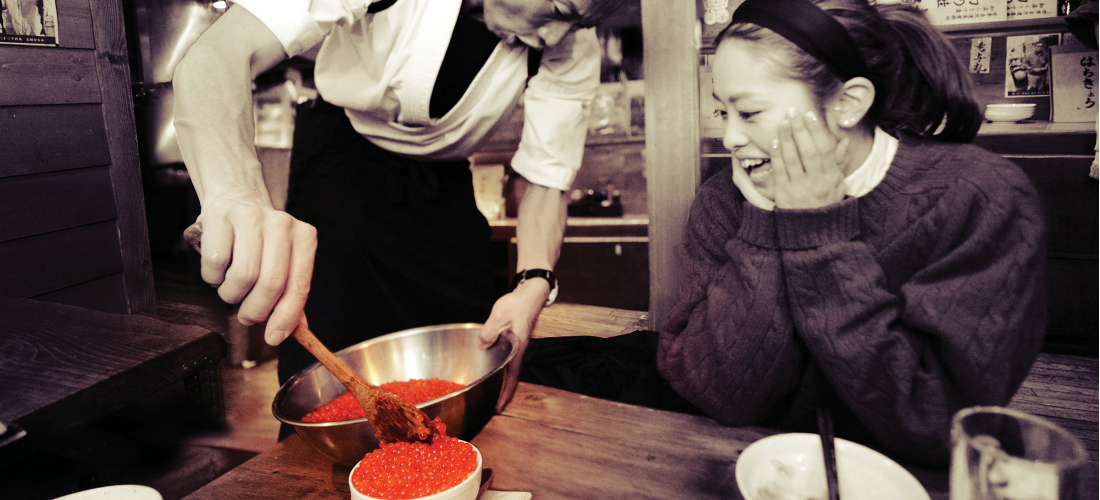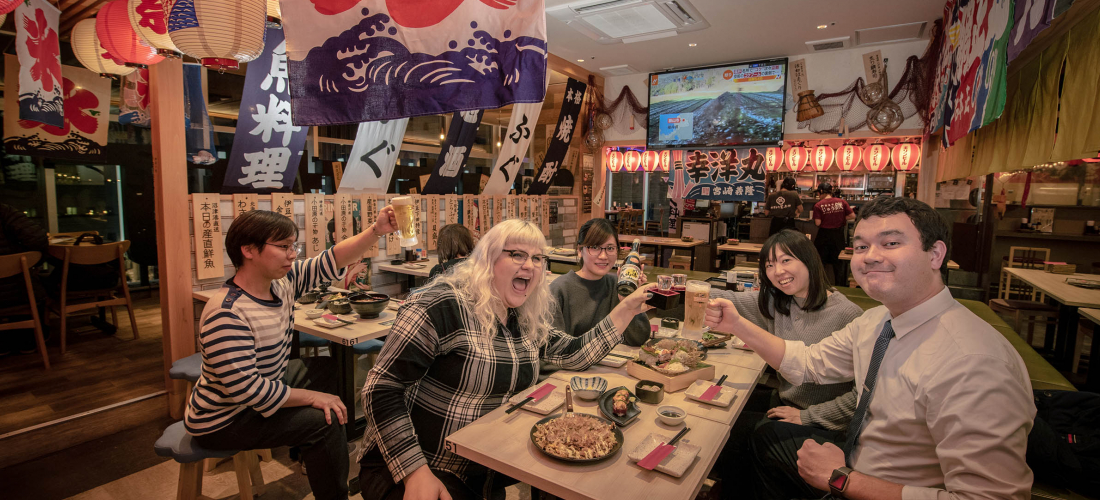CONTENTS
Le Japon adore les plats uniques et la cuisine locale, et ces six délices ne sont que la pointe de l’iceberg en matière de cuisine japonaise!
De la nourriture originale qui n’existe qu’au Japon?
Chaque pays aura ses propres plats uniques, et le Japon ne fait pas exception à cette règle.
Ces six délices ne sont que la pointe de l'iceberg, mais si vous recherchez des plats inhabituels à découvrir, ils seront déjà une bonne expérience pour commencer! Jetons un coup d'œil à la cuisine japonaise unique!
1. Wasabi Donburi & Jus au Wasabi
!!! Attention !!! les produits suivants sont au !!! WASABI !!!
Pour certains d'entre nous, cela peut être une arme mortelle, pour d'autres, c'est un plaisir certain. Cette sensation vive qui commence par brûler la bouche, puis qui frappe le nez et les sinus, allant parfois jusqu'aux larmes aux yeux …
Que vous aimiez ou non les épices du wasabi, ces plats vous réveilleront sûrement! Ci-dessus, vous verrez un repas complet de wasabi, disponible au restaurant Daio Wasabi Farm dans la préfecture de Nagano. Ce plateau comprend du wasabi-don (ワ サ ビ 丼, un bol de riz au wasabi), des feuilles de tempura wasabi et une petite noix de wasabi frais que vous pouvez moudre vous-même. Oubliez le radis pimenté que vous obtenez à l'étranger, ce wasabi est authentique et on ne peut plus frais. Dans la même ferme de wasabi, vous pouvez également essayer le curry de wasabi (style thaï au curry vert), la crème glacée au wasabi et tout laver avec une boisson rafraîchissante au wasabi.
2. Pizza au Shirasu
Shirasu (シ ラ ス), petits poissons alevins, sont largement utilisés dans la cuisine japonaise, mais pas aussi répandus à l'étranger. Dommage, étant donné que les shirasu sont une excellente source de calcium!
Il y a quelques endroits au Japon où vous pouvez déguster ces petits poissons fraîchement pêchés, mais les shirasu ne sont disponibles crus qu'une partie de l'année. Pour un avant-goût des petits bijoux remplis d'umami, Enoshima est l'endroit le plus proche de Tokyo.
Autour du Japon, le shirasu est généralement mangé avec du riz et desaliments de base japonais. Cependant, nous ne connaissons qu'un seul endroit où vous pouvez trouver le petit poisson sur une pizza! Un restaurant à Enoshima a décidé que les shirasu ne sont pas seulement destinés à la cuisine japonaise traditionnelle, mais qu'ils sont bons pour être réinventés. Si les anchois peuvent être savourés sur une pizza, pourquoi ce petit poisson blanc ne serait-il pas aussi une bonne garniture? Et voilà, la pizza shirasu, savoureux sur une pâte croustillante, une sauce tomate brillante et une couche de fromage satisfaisante.
Pour un plat plus traditionnel, le shirasu cru (un peu comme le sashimi) n'est disponible que quelques mois par an. Shirasu-don, un lit de riz surmonté d'un tas de alevins de poisson super frais, est un mets rare même pour beaucoup de Japonais!
3. Ippon Udon
Un udon pas comme les autres.
Ce plat, trouvé dans la ville de Hanyu, Saitama, est servi avec un seul long brin d'udon dans un bol. C'est un vrai, un gros, long morceau de nouilles udon. Mais l'udon est cuit dans le bouillon pour absorber juste la bonne quantité de saveur salée. En le regardant, vous pouvez voir que ce n'est pas un udon ordinaire.
Ippon udon (一 本 う ど ん, littéralement udon à un brin), a une histoire enveloppée de mystère et de légende au Japon. Certains historiens de la gastronomie pensent que c'est un plat authentique qui existait dans le passé du Japon. Un restaurant familial au Japon propose le plat, affirmant que leur recette remonte aux ancêtres qui ont créé l'ippon udon il y a longtemps. D'autres au Japon disent qu'il y a peu de preuves pour cette affirmation, et que ce n'est que du mythe. Qui que ce soit qui a inventé le concept original, ils avaient clairement une imagination impressionnante! Ce bol particulier d'ippon udon provenait d'un restaurant en bordure de route totalement différent, où il a fallu trois ans aux chefs pour perfectionner la nouvelle recette.
En fin de compte, ils ont proposé une nouille moelleuse et savoureuse, avec une texture presque comme du mochi!
4. Pot-au-feu de calamar luciole
Ce n'est pas votre pot-au-feu shabu-shabu de tous les jours!
Normalement, le shabu-shabu est principalement un plat de viande, et vous êtes plus susceptible de trouver du bœuf de haute qualité dans un restaurant japonais de pot-au-feu que des fruits de mer. Cependant, dans ce cas, les délicats calamars lucioles (ou hotaru ika, ホ タ ル イ カ) sont la vedette du spectacle. Les calamars luciole, ainsi nommés parce qu'ils brillent dans la mer nocturne, sont rapidement cuits dans le bouillon doux et mangés entiers! Si les globes oculaires vous font un peu peur, ce n'est peut-être pas le plat qu'il vous faut, mais faites-nous confiance quand nous disons que c'est un mets délicat.
5. Negisoba
Oubliez les baguettes ― essayez de manger ce bol de nouilles soba avec un seul oignon vert!
C'est vrai, en japonais negi (ネ ギ) signifie oignon vert, donc c'est littéralement un oignon vert soba. Il peut sembler difficile de manger rien qu'en le regardant, mais après avoir essayé, les gens disent souvent que ce n'est pas vraiment difficile. Vous pouvez voir que le negi fait un bon travail pour ramasser des nouilles! Le plat est une spécialité d'Ouchi-juku, dans la préfecture de Fukushima.
Ne vous inquiétez pas, les restaurants fourniront toujours des baguettes à ceux qui en ont besoin.
6. Langue de boeuf (Gyu-tan)
Au Japon, la langue de vache ou de bœuf s'appelle gyu-tan (牛 タ ン) et c'est une délicatesse à prix élevé. Ces dernières années, la viande de langue a perdu de sa popularité dans de nombreuses régions du monde, comme les abats et les morceaux comme les tripes. Mais la viande tendre, avec une texture unique et une saveur délicieuse, est toujours populaire au Japon! Étant donné que chaque vache ne fournit qu'une quantité très limitée de viande de langue, la langue finit par être un morceau apprécié, ce qui en fait une gâterie à prix élevé.
Une face différente de la cuisine japonaise
Vous prévoyez de voyager au Japon? Les ramen et les sushis sont de délicieux éléments de tout voyage, mais pourquoi ne pas essayer ces plats uniques pendant que vous êtes ici? Nous pensons qu'ils sont plutôt délicieux, mais même si vous ne pouvez pas être d'accord, vous aurez une belle histoire à raconter à la maison!
Restez à l'affût de nouveaux articles originaux sur JAPANKURU. 🐶 Assurez-vous de nous suivre Facebook et Instagram pour plus d'histoires japonaises!
JAPANESE BEEF | 4 Must-Try Restaurants in Tokyo
Exploring Japan's All You Can Eat and Drink "Houdai" Culture
Details
NAME:Cuisine japonaise
MAP
PROFILE
Follow us @Japankuru on Facebook, Instagram, and Twitter!
COMMENT
FEATURED MEDIA
VIEW MORE
Which snacks make the best Japanese souvenirs?~ Jaga Pirika ~ 일본과자 선물 뭐하지?~자가피리카 편~ #pr #calbee #jagapokkuru #japanesesnacks #japanesefood #japanesesouvenir #japantravel #japantrip #naritaairport #hokkaido #나리타국제공항 #일본여행선물 #흔하지않은기념품 #일본쇼핑리스트 #일본과자추천 #고구마과자 #일본간식추천 #일본면세점쇼핑 #개별포장 #일본감자칩 #도쿄나리타공항면세점 #현지인추천 #일본여행 #일본기념품리스트 #자가포쿠루 #자가피리카

Asakusa's Sanja Matsuri, one of the biggest festivals in all of Tokyo, is almost here! Make sure you check out the festival route so you don't miss all the festivities this May. #asakusa #sanjafestival #sanjamatsuri #asakusashrine #sensoji #sensojitemple #japanesefestival #shintoshrine #japaneseculture #tokyo #tokyotrip #tokyotravel #asakusasightseeing #matsuri #japantrip #japantravel #springinjapan #tokyotravel #japankuru #산자마츠리 #아사쿠사 #일본마츠리 #일본여행 #일본5월

Odaiba's DiverCity Tokyo Plaza is home to the famous real-size 20m-tall Unicorn Gundam, and the popular shopping center has even more Gundam on the inside! Check out the Gundam Base Tokyo on the 7th floor for shelves upon shelves of Gunpla, and the Gundam Base Tokyo Annex on the 2nd floor for cool anime merchandise. Both shops have tons of limited-edition items! #pr #odaiba #tokyo #tokyotrip #japantrip #japantravel #PR #divercity #divercitytokyoplaza #tokyoshopping #gundam #unicorngundam #gundambasetokyo #anime #otaku #gunpla #japankuru #오다이바 #다이바시티도쿄 #오다이바건담 #건담 #일본건담 #건프라 #건담베이스도쿄

Evangelion, in miniature!? Tokyo's SMALL WORLDS Miniature Museum is actually a must-see for anime lovers, thanks to the tiny Evangelion Hangar and Tokyo-III... plus a whole universe of other scenes both real and fictional. #smallworlds #smallworldstokyo #tokyotrip #tokyotravel #evangelion #eva #anime #miniature #miniatures #animefigure #japantrip #japantravel #에반게리온 #스몰월드 #에반겔리온 #スモールワールズ #오다이바 #아리아케

Have you sat down for a snack at Sumida Aquarium yet? This aquarium next to Tokyo Skytree is known for its penguins and garden eels, but we can't get enough of their cute snacks! There are lots of good seats around the aquarium, too, so it almost feels like one big cafe. 🐧 • Find out more at Japankuru.com! (Link in bio.) • #japankuru #sumidaaquarium #skytree #tokyoskytree #solamachi #sumida #tokyo #tokyotrip #tokyotravel #aquarium #japanesesweets #themecafe #すみだ水族館 #Japan #日本 #일본 #Japon #ญี่ปุ่น #Japão #япония #japantravel #日本旅行 #日本旅遊 #japan_of_insta #japantrip #traveljapan #japan🇯🇵 #igerstokyo #explorejapan

For anime fans, the Evangelion areas at Small Worlds Miniature Museum are a must see! The tiny miniature people in the Evangelion Hangar look like ants beneath the moving Unit-01, Unit-00, and Unit-02! And over in Tokyo-III, characters like Shinji, Rei, and Katsuragi live life on a miniature scale. #odaiba #tokyo #tokyotrip #japantrip #japantravel #ariake #smallworlds #miniaturemuseum #smallworldstokyo #tokyotravel #evangelion #eva #anime #miniature #miniatures #animefigure #japankuru #스몰월드 #에반게리온 #오다이바 #오다이바관광 #오다이바스몰월드 #미니어쳐

